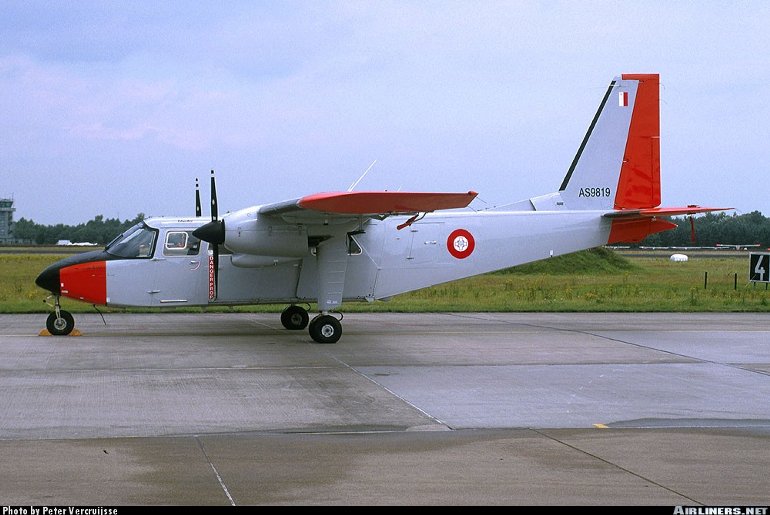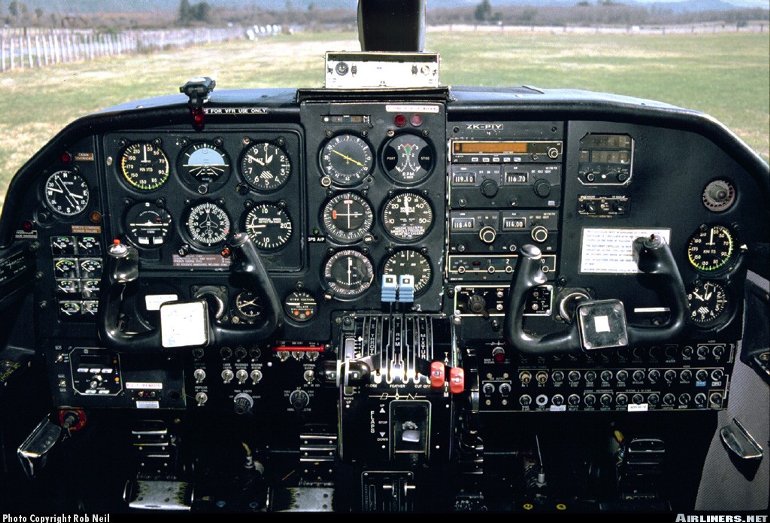Aircraft Technical Data
Britten-Norman BN-2 Islander


| Details | |
| Country of Origin | United Kingdom |
| Type | Commuter airliner and light utility transport |
| History | The BN-2 Islander was Britten-Norman's second original design, work on which began during 1963. Developed as a Dragon Rapide replacement, the emphasis was on producing a rugged and durable aircraft that had good field performance, low operating costs and was easy to maintain. One unusual feature is that there is no centre aisle between seats in the main cabin, instead there are three doors along each side of the fuselage for passenger boarding. The prototype BN-2 Islander was powered by two 155kW (210hp) IO-360s and first flight was on June 13 1965. The first production machines were powered by 195kW (260hp) IO-540s and were simply designated BN-2, the first flew in 1967. A small number were built before production switched to the BN-2A which introduced fairings to the main undercarriage legs, wing leading edge and flap droop, and an increased max takeoff weight. From 1970 the base A model was the BN-2A-6 and the BN-2A-7 had extended wingtips, while the BN-2A-2 and BN-2A-3 were powered by the 225kW (300hp) IO-540, the latter with the extended wingtips. Appearing in 1972 were the 195kW (260hp) powered BN-2A-26 and extended wingtips BN-2A-27, and the 225kW (300hp) BN-2A-20 and extended wingtips BN-2A-21, all four models having higher weights. Further improvements came with the BN-2B range with higher weights, improved interior and instrument panel and shorter diameter props. The 26, 27, 20 and 21 variants were available as before. The 27 and 21 were later dropped while the BN-2B-20 and BN-2B-26 remain in production. The turboprop (Allison 250) powered BN-2T has been built since 1981. In September1979 Britten-Norman became Pilatus Britten-Norman, in July 1998 it was renamed back to Britten-Norman, and from April 2000 it became B-N Group. |
| Powerplants | BN-2A - Two 195kW (260hp) Lycoming O-540-E4C flat six piston engines driving two blade constant speed propellers. BN-2B-20 - Two 225kW (300hp) Textron Lycoming IO-540-K1B5s. |
| Performance | BN-2A - Max speed 273km/h (147kt), max cruising speed 257km/h (140kt), economical cruising speed 246km/h (133kt). Initial rate of climb 970ft/min. Service ceiling 13,200ft. Range at economical cruising speed 1400km (755nm). BN-2B-20 - Max speed 280km/h (150kt), max cruising speed 264km/h (142kt), economical cruising speed 245km/h (132kt). Initial rate of climb 1130ft/min. Service ceiling 17,200ft. Range at economical cruising speed and standard fuel 1136km (613nm), with optional fuel 1965km (1060nm). |
| Weights | BN-2A - Empty equipped 1627kg (3588lb), max takeoff 2993kg (6600lb). BN-2B-20 - Empty equipped 1925kg (4244lb), max takeoff 2993kg (6600lb). |
| Dimensions | Wing span 14.94m (49ft 0in), length 10.86m (35ft 8in), height 4.18m (13ft 9in). Wing area 30.2m2 (325.0sq ft). |
| Capacity | Flightcrew of two pilots or pilot and passenger on flightdeck, with seating for eight in main cabin. Air ambulance accommodates three stretcher patients and two medical attendants. |
| Production | Over 1200 delivered since 1969, including production in the UK and Romania and military Defenders. Approximately 65 BN-2Ts built. |
| Related Links | Britten-Norman BN-2 Islander |
The backbone of this section is from the The International Directory of Civil Aircraft by Gerard Frawley and used with permission. To get your own copy of the book click here. |
|








